On Hanami by Denise Fernandes (and on Vóvó Nica’s burnt papaya tree)
Some films you don’t watch; you feel them as they reach into your core, oftentimes before a single word is even uttered. Hanami, by the young Portuguese-Capeverdean director Denise Fernandes, is one of those rare films that doesn’t penetrate your soul through the eyes but rather seeps in through your skin. It lingers in the inherited silences, it speaks through whispered gestures, it resurfaces in the anguished absences in our own lived experience. With the languid rhythm of a dry wind ascending the steep slope of a volcano to reach its plateau at sunset, and gently cool it for the night, this masterful feature doesn’t attempt to explain feelings. Instead, it gently offers a sense of belonging and, for us in the Capeverdean diaspora, a tableau of memory –– a belonging and a memory both kind and grounded, woven by the same hands that once scrubbed clothes on a washboard, that once picked papayas at dawn, that once lit up a canhotinho [small pipe] at dusk, that once comforted a fidju kodé [youngest child] while obfuscating their own pain.
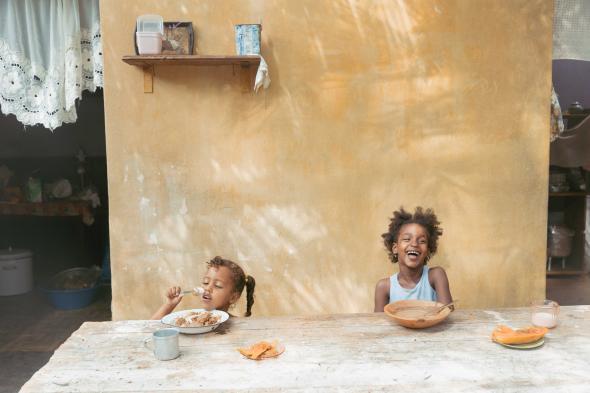 photo by Zachow Pictures
photo by Zachow Pictures
Part 1: Seaside lava: on the technique and aesthetic of a bold-yet-demure feature debut
There is a kind of beauty that forms slowly, like lava hardening as it touches the sea, forging new land as it infiltrates the deep blue of the ocean, past the shoreline, where small sharks roam. It’s a mineral beauty: silent, unadorned, direct, and free of affectation. Hanami lives in that place.
A Portugal, Switzerland, and Cabo Verde co-production, Hanami was shot entirely on the Island of Fogo, featured here not as an exotic backdrop, as it is in so many other films, but as a living being. The film takes its time to exist in its emotional fabric, shaped by careful, sensitive, intelligent direction that captures, with stunning clarity, the psychosocial subtleties of a community, of an island, of a country, of a nation.
The images and framing by cinematographer Alana Mejía González do more than document — they listen to Fogo. Natural light filters through the film with the same insistent delicacy as the golden sun slipping through the cracks of French window shutters in Chã das Caldeiras at dawn. In many scenes, faces emerge from shadow like quiet apparitions, or like muted prayers, and bodies move with the slow gravity of those carrying memory and inherited survival. Or, one could say, they move with Fogo’s redolent physical tempo. Or with the slow, steady and deliberate pace of a woman walking uphill with a 10L bucket of water balanced on her head. That is, come to think of it, the perfect analogy for the gentle lens Denise Fernandes turned on Fogo, an island that a largely masculine emigration has, in many ways, shaped into a matriarchal society. In any case, there’s no rush. There is never a rush. In this film, the refusal of speed, within a context of an impatient, fast-moving industry is a thoughtful, deliberate political gesture.
The sound, by Henri Maïkoff and Etienne Curchod, is steeped in a rich austerity, giving the film weight and texture. Both present as much in what is there as in what is not. You hear the dry rustle of papaya leaves in the wind, the rhythmic clatter of spoons against tin plates, the brush of fabric against skin, the flutter of cloths or mosquito nets in the wind that comes and goes like a discreet guest — as if the island were breathing through the everyday lives unfolding on screen. And then, there is what you don’t hear.
Selin Dettwiler’s editing respects that breath, never rushing what needs time. There is enough silence in between scenes for sôdade [a type of melancholic longing for something that was, would have been, or maybe will never be] to seep into the soul. With every shot, we are invited to recall a scent, a voice now gone, an absence that weighs on us, that leaves a mark. Universally enough that it works on anyone.
The narrative is minimal, but never simplistic: Nana, the protagonist, grows up in fever and abandonment, between what’s missing and what blossoms. We, the viewers, grow with her — feverish, uneasy, abandoned, awestruck. The performances by young first-time actors Daílma Mendes and Sanaya Andrade are striking in their restraint and depth. Their eyes carry more than their age could possibly explain. Every gesture is organic, not rehearsed. Or, as Denise Fernandes explains, directed with the barest guidance, leaving space for them to simply be. Alice da Luz, as Nia, the absent and longed-for mother, builds a layered character shaped by generational silence. Full marks, in fact, to the casting team, which spotted an uncanny physical resemblance in the actresses playing mother and daughter. For Nia, it’s not about redemption, but about attempting to be present. Without a word, her eyes betray the hesitation of this attempted reconnection. or its failure. It’s a story familiar to anyone who’s known a mother from Fogo who had to leave a child with their grandmother to djobi vida [to go look for a better life for the next generation. In the grandmother’s eyes, as she looks at her prodigal daughter Nia, there is no hint of reproach. Love is still possible, if hesitant. As it often is in life.
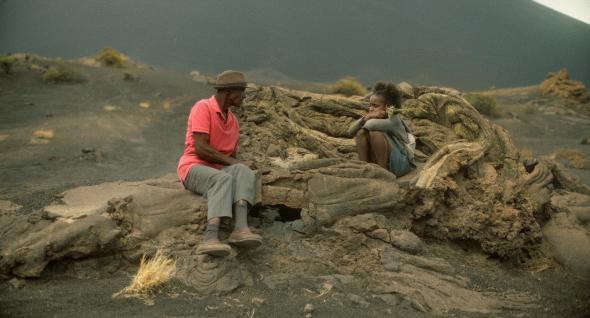 courtesy Hanami / O Som e a Fúria
courtesy Hanami / O Som e a Fúria
Yuta Nakano as Kenjiro, the Japanese visitor, may at first seem out of place — but he’s not. Kenjiro is a fleeting echo, a symbolic doubling of hanami itself, the Japanese concept of contemplating an ephemeral flower. In this case, the flower is not cherry blossom. It is resistance. It is affection. It is belonging. And it blooms from scorched earth, like the burnt papaya tree in my grandma Nica’s yard, after an eruption. There is another resonance: as a central node in the maritime routes of the empire, Cabo Verde has for centuries sent out sailors and received travelers from every corner of the globe, notably Nagasaki.
The production design by Mathé, costumes by Silvia Grabowski, and makeup by Cristina Fischer build a world where realism is dignified and discreet. Earth-tone cloth, clay, sun, slag, ash, plants, ruin. Convincing as life — despite moments of something close to magical realism. The things as they are.
And for that very reason: beautiful.
In a rare and deliberate act, Denise Fernandes builds a film where technique doesn’t serve spectacle, but care. And that care is what structures this cinema that lingers. That heals. That remembers. That remains.
Part 2: Outward slopes: on the gaze of the world and on diaspora’s mirrors
Hanami was one of the great surprises of the international film circuit in recent years. Not because it shouted louder than others — but because it whispered more intimately. And the world listened.
Locarno. Chicago. São Paulo. London. Marseille. FESPACO. Göteborg. Lisbon. Hanami shone in all of them, collecting prizes such as Best Emerging Filmmaker, the Ingmar Bergman International Debut Award, the Roger Ebert Award, the Montgolfière d’Or, the Best Production Design Award, and most recently, the MAX Award for Best Feature Film in the National Competition at IndieLisboa, and a Swiss Oscar shortlist nod. But what moves the audience isn’t the bling. It is the echoes. The hushed conversations after screenings. The long sighs in the dark. The discreet tears.
One review in Portuguese newspaper Público read: “the miracle of scarcity multiplied into abundance.” Another, in RTP’s CineMax magazine, saw in the film “a return to the roots.” Expresso spoke of “beautiful things raining on an island”, as if Fogo, through Denise Fernandes’ gaze, had become a place capable of sheltering the sublime without turning it into spectacle.
But for us in the Capeverdean diaspora — for me, as for many others — this film is not merely a success story. It is recognition. It’s a return. Like many from the Fogo diaspora, I grew up in Greater Lisbon, surrounded by Capeverdeans and other Africans, and yet somehow always at the margins of true belonging — both among Capeverdeans and among the Portuguese. At home, we spoke Portuguese. Creole was reserved for my father, my uncles, for acquaintances, elders, neighbours, and for moments that required secrecy or confidence. I listened but never imitated. It wasn’t seen as “educated,” or “polite.” Better to speak Portuguese only if you wanted to do well in school. They didn’t know (and I didn’t know, then) that with that bargain, we were losing entire parts of ourselves, some we would spend a lifetime trying to recover, and others that could never be reclaimed again.
I, and so many other Cape Verdeans of my post-independence generation, grew up with the idea that there were good and bad ways of being Capeverdean. That the Creole of Sal was softer than that of Santiago, more resonant; that Fogo’s was harder, more musical; and that São Vicente’s was “more civilized,” thanks to its closeness to Portuguese and Mindelo’s cultivated, merchant-bourgeois aura. As if belonging had hierarchies. As if identity were a passport and not flesh and skin.
That carried through into summers in Cabo Verde. Uncles returning from Holland or America would look at us with an air of superiority. We, the ones from Portugal, were the “remediados” — those just getting by. And perhaps we too looked down on those who had never left the island. As if that were a failure, and not courage.
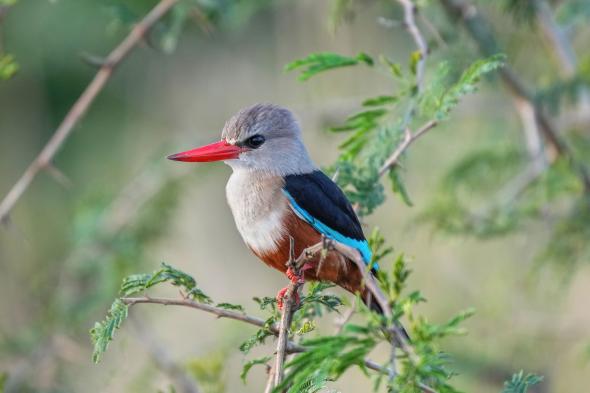 photo by Giles Laurent
photo by Giles Laurent
It was for this reason that, in the dark of Culturgest’s auditorium in Lisbon, watching Hanami for the first time, in the company of what felt like a complete community, my eyes felt moist. Perhaps because of the children we once were, trying to fit into identity molds invented by others. Or perhaps because of my father, who suddenly flashed through my mind, sitting on the sofa one late afternoon when I came home from school, staring straight at the television, motionless, until I realised his hard, almost embarrassed silence was accompanied by a single tear rolling down his right cheek, as the lava from Fogo Peak slid down the screen, descending toward his village.
That tear came back to me. For him, for myself, for not having known — as the socially inept teenager I was then — how to console the man who had, until then, seemed indestructible to me and who, in that moment, with his chest tight, no longer was.
That tear came back, above all, because I knew I wasn’t alone. The silence in the room confirmed it.
With the comings and goings of visits in Hanami, I remembered my Vóvó Nica, delighted to have seen a passarinha — or passadinha (Halcyon leucocephala), a rare kind of hummingbird found on Fogo — land on the roof and sing, assuring her that we would be coming to visit even before we ourselves knew it. With that little bird, the memories came back. The bird was a herald of good news. Sometimes, the visit never actually came. And the little bird passed by alone, with no one following behind. In those times, it was the messenger of sôdade.
In Hanami, that back-and-forth appears as a symbol of the in-between. Of the liminal. Of waiting. Of hoping
Part 3: Chã das Caldeiras: a plateau of belonging amid high-altitude vineyards in barre burnt soil
Nana’s journey in Hanami is the journey of all of us who try to belong without a manual. We grow up between codes, signals, prohibitions. We perform constant linguistic and cultural code-switching without even noticing. We learn that there is a “right” way to be Cape Verdean, here or there — and almost invariably, it isn’t ours. Ours is subject to the expertise of those whose specialty is other people’s lives.
At a certain point, something shifts in our understanding, in our confidence, in our connection. For Nana, it happens gently, when she refuses to leave with Nia, the mother. For Denise, as she’s said in interviews, it came through gradually reclaiming Cabo Verde. For me, it was much the same.
My own moment came one summer when I returned to Fogo with a long holiday planned by my parents, though with little enthusiasm on my part. I was older then, and this was no longer just a visit, — though I didn’t know it yet; it was a reconnection. The prop plane descended through clouds and through the memories of previous trips, and when the door opened, the smell — dry, warm, sharp, almost astringent — hit my nose like an inheritance from another visit, maybe the first. A scent wired into my brain, telling me before I’d even set foot on the tarmac: I am from here. This is home.
That summer, I ran through dusty streets with my cousins. Sometimes there was a dance, like the one Denise Fernandes depicts in Hanami, and we danced until dawn. I was teased by my cousins about my green eyes (odju di cégu!), even though almost all of them, darker skinned though they were, had green eyes too. I never felt lesser, never menino di fora [kid from away]. That summer, and ever since, they embraced me as menino di li. I felt seen — perhaps for the first time in my life. And slowly, I accepted the ambiguous place of the one who comes from afar but is from within. Who has learned to love the island through absence and through words. Through sôdade. Through the desire to be named.
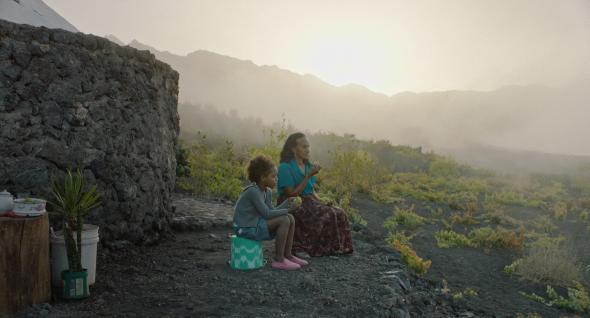 courtesy Hanami / O Som e a Fúria
courtesy Hanami / O Som e a Fúria
And I was named. Many years later, decades later, in São Filipe, one day, as an adult. On a work trip, I stepped off a plane, and the taxi driver who got me turned around when I asked him to take me to Mosteiros, and fixing me with a sharp gaze asked — first in rapid Portuguese, then in Kriolu — “Tu és dos De Andrades, não és? Lá de Mosteiros?” And in that moment, without ceremony, I was claimed by that man, apparently recognised by my nose. Not by a document, but by the look of someone who had never seen me, yet knew me and mine.
Years later, I would drive the ring road around Fogo with a friend, five years after my father’s sudden death. Five years spent trying to understand my belonging without him. And on each bend of that stone road, another memory struck; and another, and another. Cova Figueira. Relva. Achada Grande. Queimadinha. Fonsaco. Mosteiros. Fajãzinha. Ribeira Ilhéu. São Filipe. Patim. Fonte Aleixo. Figueira Pavão. And then Chã das Caldeiras. A pang. A laugh. A beer at a roadside shack. My grandmother standing before that papaya tree burnt by lava. A dance in a cement courtyard. An argument with my father, in Portuguese. An unanswered question. The cousins from America. My first funáná with a girl whose name I’ve forgotten, but whose green eyes and blue dress I remember. That road became a ritual of mourning. Of release. Of memory. Of catharsis. Of reclamation. And at a certain point, arriving in Chã, I stopped thinking and feeling. The air there is different. Thinner. More demanding. And more sacred.
There, where lava destroyed everything, where we’ve seen vines grow again, where wine has been reborn from the ashes, where people who lost houses, clothes, photos, memories still came back to live, to play music, to laugh with children, to plough the fields, to tell stories.
It was there, five years after my father’s death, that I understood my Cabo Verde was not just inheritance. It was flesh. It was choice. It was construction. It was persistence. It took some effort. It was having lived in Mindelo and worked in Praia, having climbed needle peaks in Santo Antão, having taught in Maio and Boavista. That Cabo Verde, I realised then, was mine, unfiltered by others.
One day, about eight years ago, I was interviewed on a Capeverdean TV talk show, and the host asked me if I wished to speak in Portuguese or Kriolu. Hesitant, I chose the latter and made mistakes that embarrassed me; that is, until someone told me to be proud of that Kriolu of mine. Mixed as it was. Sóncent ku Badiu ku Fogo ku Portugués ku Inglés… Irregular, sim — mse meu.
Hanami does that. With images. With silences. With fevers, with flowers. With the right time.
There are no happy endings in the film. There is a gaze toward the horizon, and we ourselves must decide whether the sea is prison, dream, opportunity, or all three. But there is possibility. There is reconciliation. And there is a flower, even if blossoming only fleetingly.
Fogo Under a New Light
Hanami may well be the best Capeverdean film I have seen on the big screen. Or perhaps the one in which I have seen myself most. Not because it shouts its identity at you, but because it whispers it firmly. Because it doesn’t need flags to assert belonging. Because Denise Fernandes understood that being from a place is more than being born there: it is recognising yourself in it. Feeling part of a community. Allowing it to shape you, to move you, to be your home, even from a distance.
In the dark of Culturgest’s theatre, I saw in Hanami a Fogo Island under a new, and yet familiar, light. A Fogo as delicate as I never imagined possible, but which I instantly recognised as the same softness with which my grandmother would smoke her canhotinho on the doorstep at sunrise, strong coffee and coconut cakes on the table, asking me: “Pedro, bô manxê dretu?” [Pedro, did you sleep alright?]
And I realised that light was also mine, as it is Denise Fernandes’s, each in our own way. I realised that the road between Lisbon and Chã das Caldeiras (or even the shorter path Nana walks from Fogo’s coast up to Chã) is not measured in kilometres, but in persistence. In love. To be Cape Verdean, with all the hyphens, all the pauses, all the dialects, the absences and the presences, with all the tears — mine on every return flight, those on the ring road where I mourned my father, and my father’s, suddenly returned to me by Hanami — is, like so many things, a constant adaptation, a constant return.
Because, for as long as there are little birds to announce a visit, there will always be someone returning. In the flesh or only in name, in longing or in silence. One day it will be Nana. Another, Denise. Another, any one of us. The truth is that our nation has never fit within the borders drawn for it, nor in the Creole languages they tried to correct. And yet, it endures in broken voices, in wet eyes, in vines blooming from volcanic slag. Hanami reminds us that belonging is neither a straight line nor a fixed destination. It is a journey made between absences and a burnt papaya tree, between ash and memory.
And whatever grows from ash is not ruin. It is a strong root.
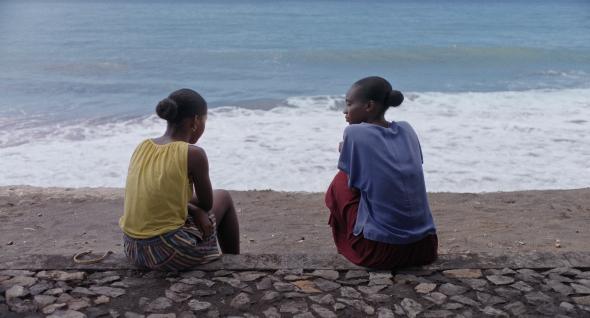 courtesy Hanami / O Som e a Fúria
courtesy Hanami / O Som e a Fúria